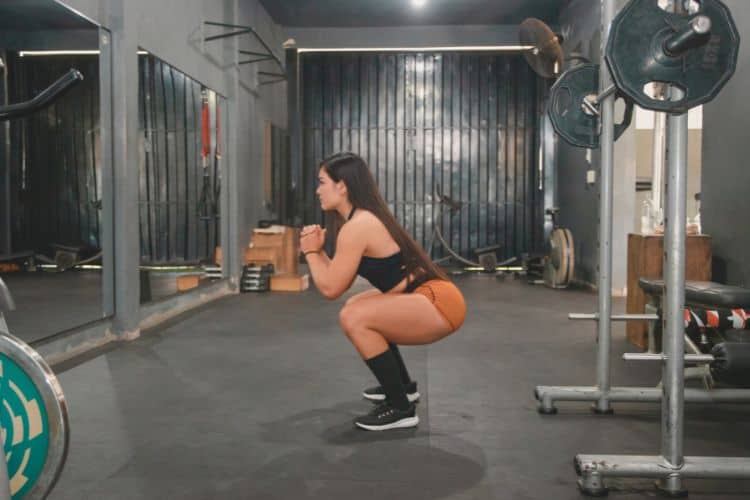Sign up for workout ideas, training advice, reviews of the latest gear and more.






For many women, the pursuit of a toned and lean body might often lead them to overlook a fundamental component of fitness and well-being: core stability. While words like ‘abs’ or ‘six-pack’ dominate the health magazines and workout videos, the deep-seated significance of core stability is relatively less discussed. However, it plays an instrumental role in ensuring holistic physical health, especially for women.
Simply put, core stability refers to the ability of the muscles around the trunk and pelvis to support the spine and keep the body balanced and upright. It encompasses not just the front abdominal muscles but the muscles of the back, hips, and pelvis.
1. Improved Posture: Women, especially those leading sedentary lifestyles, tend to slump or lean forward, which can lead to chronic back pain and posture issues. A strong core provides support to the spine, helping in maintaining an upright position.
2. Lower Risk of Injuries: Core stability contributes to overall body balance, making one less susceptible to falling or getting injured during physical activities.
3. Enhanced Functional Strength: Everyday activities, whether it’s lifting grocery bags or playing with your kids, become easier with a strong core.
4. Pregnancy and Postpartum Recovery: For mothers-to-be, core strength can be a boon. It helps alleviate back pain during pregnancy and aids in a smoother delivery. Post-childbirth, a strong core can accelerate recovery.
5. Boosted Athletic Performance: Whether you’re into running, yoga, or dance, core stability enhances performance by improving balance, power, and agility.
1. Understand Your Core: Before diving into exercises, take a moment to understand your core. It isn’t just about the abs. Your core comprises multiple layers, including the transverse abdominis, rectus abdominis, obliques, and erector spinae. Engaging all these muscles is key.
2. Engage in Targeted Workouts: Exercises such as planks, bridges, bird-dogs, and Russian twists target various core muscles. Incorporate a mix of these into your routine.
3. Prioritize Quality over Quantity: Rather than counting repetitions, focus on performing each exercise with precision. Hold the position, feel the burn, and ensure you’re engaging the right muscle groups.
4. Integrate Pilates and Yoga: These disciplines emphasize core strength and flexibility. The controlled, deliberate movements of Pilates and the stability-focused poses in yoga can be especially beneficial.
5. Mind Your Daily Activities: Engage your core even when you’re not working out. Whether you’re sitting at a desk or walking, periodically check in with your core. Ensure it’s engaged, and your posture is upright.
6. Stay Consistent: Like any other fitness goal, consistency is key. Regularly work on your core, and you’ll see improvements not just in strength but in overall health and well-being.
1. “Crunches are the Best Core Exercise”: While crunches have their place, relying solely on them can lead to an imbalance. It’s essential to diversify your core exercises.
2. “A Visible Six-pack Equals a Strong Core”: A chiseled abdomen might be aesthetically pleasing, but it doesn’t necessarily imply core stability. Deep, internal muscles play a significant role in stability, and they might not be visible externally.
3. “Core Workouts Result in a Thin Waistline”: While core exercises can tone muscles, reducing belly fat requires a combination of diet, cardio, and overall strength training.
As women navigate through the various phases of life, from adolescence to motherhood, menopause, and beyond, core stability emerges as a silent ally. Beyond the apparent physical benefits, it holds a wealth of advantages that spill into emotional and mental spheres as well.
Emotional Resilience and Empowerment:
The core is often referred to as the ‘powerhouse’ of the body. As one builds and hones core strength, it’s not unusual to experience a surge in emotional strength. The sense of accomplishment from holding a challenging plank or mastering a difficult yoga pose fosters feelings of empowerment and self-efficacy.
Mental Focus and Discipline:
Cultivating core stability requires concentration and discipline. This focus on the present moment can be likened to a meditative state, bringing about clarity and calmness. Over time, this discipline can translate into other areas of life, from career aspirations to personal goals.
A significant concern for many women as they age is the loss of bone density, leading to conditions like osteoporosis. A lesser-known fact is that maintaining a stable core can mitigate some effects of bone density loss.
Prevention of Falls:
One of the leading causes of bone fractures in older women is falls. A strong and responsive core significantly improves balance and coordination, reducing the likelihood of such accidents.
Improved Mobility:
Core stability fosters a more fluid and flexible movement, making daily activities easier and more enjoyable, even in the golden years.
One of the lesser explored areas of core strength is its relationship with breathing. The diaphragm, a primary muscle responsible for breathing, is intricately linked with the core muscles.
Enhanced Breathing Patterns:
Regular core exercises can lead to better engagement of the diaphragm, resulting in deeper and more efficient breathing. This can be particularly beneficial during activities that require stamina and endurance.
Stress Reduction:
The connection between deep breathing and stress reduction is well-established. A strong core amplifies this effect, offering a dual benefit of physical strength and emotional calmness.
As one embarks on the journey to enhance core stability, challenges are inevitable. Here’s how to navigate them:
Plateaus:
It’s natural to hit a phase where progress seems stagnant. When this happens, it’s vital to modify and intensify workouts, ensuring that the core muscles are continually challenged.
Overemphasis on the Core:
While the core is essential, it’s equally crucial to ensure a balanced workout routine. Engaging in whole-body exercises ensures that all muscle groups work in harmony.
Neglecting Nutrition:
Building muscle strength and stability is as much about nutrition as it is about exercise. A balanced diet rich in protein, vitamins, and minerals is pivotal in ensuring that the body has the necessary nutrients to repair and grow.
In essence, core stability represents a harmonious blend of strength and grace. For women, this balance signifies not just physical prowess but also embodies the essence of their journey — nurturing yet robust, gentle yet powerful.
The pursuit of core stability is not just about the destination, or the toned muscles, but the journey itself. It’s about embracing challenges, celebrating small victories, and most importantly, cherishing the profound connection between the body and mind.
In the end, a stable core stands as a testament to a woman’s resilience, her undying spirit, and her unwavering strength. It’s a reminder that at the heart of every challenge lies an opportunity, and within every woman is a core of unparalleled strength waiting to be unleashed.
Stay up to date on the latest women’s health, fitness and lifestyle trends and tips.